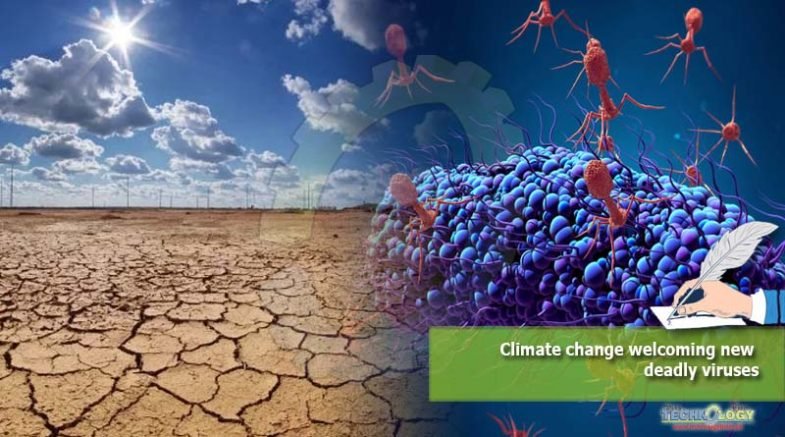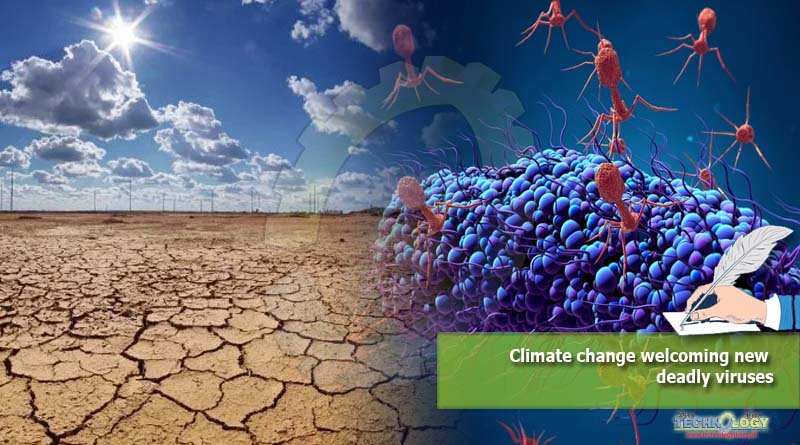Everyone is aware of a wide range of alarming issues that are associated with climate change. Climate change has revealed itself in recent decades as a new and potentially significant impact on the emergence of viruses.
 As we all know that Coronavirus has been officially declared as Pandemic by the WHO (World Health Organization) now. A total of 123,882 (including 80,955 in Mainland China, 126 Hong Kong, and ten Macau) confirmed cases of novel Coronavirus infection including 4,473 deaths (including 3,162 in China, 827 in Italy, 354 in Iran, 61 in South Korea, 47 in Spain, 33 in France, 30 in the US, 19 in Japan, seven in Iraq, six in the UK, four in the Netherlands, three in Australia, Lebanon and Switzerland, two in San Marino, and Germany, and one each in Belgium, Indonesia, Panama, Morocco, Canada, the Philippines, Egypt, Argentina, Thailand, and Taiwan) have been reported across the world as of 11 March 2020.
As we all know that Coronavirus has been officially declared as Pandemic by the WHO (World Health Organization) now. A total of 123,882 (including 80,955 in Mainland China, 126 Hong Kong, and ten Macau) confirmed cases of novel Coronavirus infection including 4,473 deaths (including 3,162 in China, 827 in Italy, 354 in Iran, 61 in South Korea, 47 in Spain, 33 in France, 30 in the US, 19 in Japan, seven in Iraq, six in the UK, four in the Netherlands, three in Australia, Lebanon and Switzerland, two in San Marino, and Germany, and one each in Belgium, Indonesia, Panama, Morocco, Canada, the Philippines, Egypt, Argentina, Thailand, and Taiwan) have been reported across the world as of 11 March 2020.
However, with time and increasing data, it is now generally accepted that climate change are not only here to stay, but also that if significant remedial measures do not take place immediately, the implications for humanity could be catastrophic.
Global warming is one of the main issues facing the world. As the globe warms, scientists warn about melting ice caps, rising sea levels, and odd, extreme weather. Permafrost melting will release “zombie pathogens” that have been frozen in ice for years while the rising temperature will allow disease-spreading insects to roam far and wide. An anthrax outbreak ripped through reindeer herds in Siberia in late July 2016, killed over 2,000. The outbreak in Russia was thought to be the result of thawing permafrost.
A study published in Nature Communications revealed that warming climate could increase the risk of Ebola outbreaks in unaffected areas. Scientist finds that global warming has allowed mosquitoes, ticks, and other disease-bearing insects to proliferate, adapt to different seasons, migrate and spread to new niche areas that have become warmer. This means that more humans are exposed to viral infections such as Dengue fever, Chikungunya, Zika, West Nile fever, Yellow fever and Tick-borne encephalitis. Besides this, there is an invisible side effect of warming temperature and rising tides on marine species.
According to a new study in Scientific Reports, melting Arctic sea ice has opened new pathways for the Arctic and sub-Arctic species to interact and that interaction has transmitted a potentially deadly virus to mammals in the North Pacific Ocean. If the affecting species are consumed by humans, it indirectly transfers to the human body and it means seafood lovers are at the risk. Chinese and U.S. researchers set off on a field trip to Tibet in 2015 and identified 33 viruses group in a melting glacier, 28 viruses were found completely new to the science.
Glaciers and ice caps all over the world are melting at alarming rates from Tibet to the Arctic to Antarctica. Scientists are racing to find out new viruses from ice to identify its nature. But can you believe it will work? In my opinion no, because if Antarctica starts melting in an unappropriated way, thousands of viruses will release to the atmosphere which has been buried for decades and will start negative consequences on the earth. The other question can we combat them? It is a worrying issue for the world not only China because the next maybe my country or your country. Let’s have hands together to control climate variations. Instead of spending money on nuclear weapons, which is also a big issue for global warming and humanity, we need to spend money on the health of human beings a major priority.
